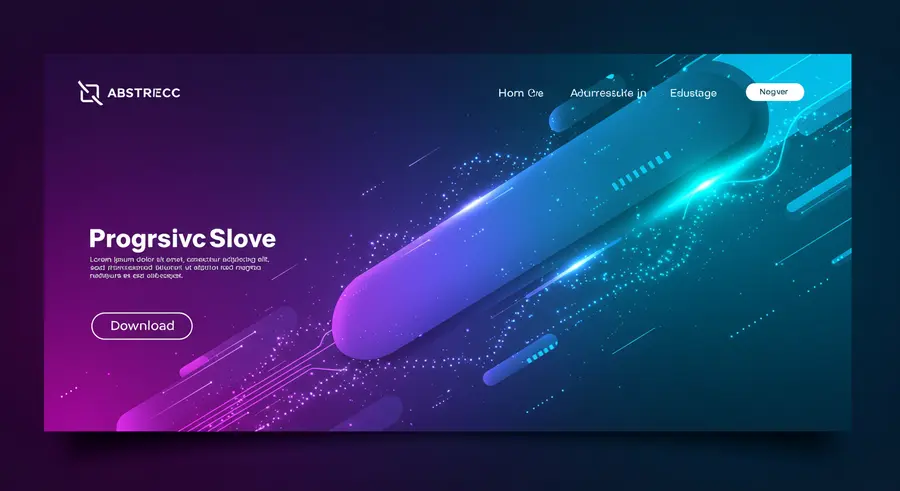Appearance

Welcome, fellow tech enthusiasts! 👋 Today, we're diving deep into a technology that's been quietly but powerfully transforming the web: Progressive Web Apps (PWAs). If you've ever wished your favorite websites could act more like native mobile apps – faster, more reliable, and even work offline – then you've already experienced the magic of PWAs!
What Exactly Are PWAs? 🤔
At their core, PWAs are just websites built with modern web technologies that offer an app-like experience. They combine the best aspects of both worlds: the broad reach of the web with the rich features and user experience of native applications. Think of them as the superheroes of the web, designed to be:
- Reliable: Load instantly, even in uncertain network conditions.
- Fast: Respond quickly to user interactions with silky smooth animations.
- Engaging: Offer immersive, full-screen experiences and push notifications to re-engage users.
The Core Pillars of PWA Power 🏗️
PWAs achieve their "app-like" superpowers through several key technologies:
Service Workers: These are JavaScript files that run in the background, separate from the web page. They are the true backbone of PWAs, enabling features like:
- Offline Capability: Caching assets and data, so your app works even without an internet connection. Imagine browsing an e-commerce site on a subway with no signal – with a PWA, you can!
- Push Notifications: Re-engaging users with timely updates, just like native apps. "Your order has shipped!" 📦
- Background Sync: Deferring actions until the user has a stable internet connection. If you try to send a message offline, the service worker will queue it and send it when connectivity is restored.
Web App Manifest: A simple JSON file that tells the browser about your PWA. It defines things like:
- The app's name, short name, and description.
- Icons for the home screen.
- The start URL and display mode (e.g., standalone, full-screen).
- This is what allows users to "install" your PWA to their home screen, making it indistinguishable from a native app.
HTTPS: Security is paramount! PWAs must be served over HTTPS to ensure the integrity of data and prevent snooping, especially critical for features like Service Workers.
Why Are PWAs the Future? 🌐🚀
The rise of PWAs isn't just a trend; it's a fundamental shift in how we build and consume web content. Here’s why they’re becoming increasingly vital:
- Cost-Effectiveness: Develop once, deploy everywhere! A single codebase serves both web and mobile, saving significant development time and resources compared to building separate native iOS and Android apps.
- Wider Reach: No app store downloads required! Users can access your PWA directly from a URL, making discovery and sharing incredibly easy.
- Enhanced Performance: PWAs often load faster and perform better than traditional websites, leading to lower bounce rates and higher conversion rates.
- Device Integration: Modern PWA APIs allow access to device features like geolocation, camera, microphone, and even hardware sensors, bridging the gap with native apps.
- AI Integration: We are seeing a growing trend of integrating AI and Machine Learning into PWAs for personalized experiences, intelligent search, and predictive functionalities. Imagine a PWA that learns your preferences and customizes content in real-time!
Real-World PWA Success Stories 🌟
Many major companies have embraced PWAs and seen remarkable results:
- Twitter Lite: Reduced data usage by 70% and increased tweets sent by 65%. It loads in under 3 seconds on most networks.
- Pinterest: Saw a 60% increase in core engagements and a 40% increase in time spent on the site after rebuilding their mobile site as a PWA.
- Starbucks: Their PWA allows customers to browse the menu, customize orders, and add items to their cart offline. Once online, they can view location-specific pricing and place their order.
- Trivago: Increased engagement by 150% for users who added their PWA to the home screen.
The Road Ahead: PWAs in 2025 and Beyond 🔮
The future of PWAs is incredibly bright. We can expect:
- Deeper OS Integration: More seamless interactions with operating system features.
- Enhanced Security & Privacy: Continuous improvements to ensure user data is protected.
- Broader Adoption: More industries and businesses leveraging PWAs for their digital presence.
- AI-Powered Experiences: More sophisticated use of AI for hyper-personalization, intelligent assistants, and predictive analytics within PWAs.
Progressive Web Apps are not just an alternative; they are a powerful evolution of the web, offering a superior user experience that rivals native applications while retaining the web's inherent accessibility. If you're looking to build cutting-edge, future-proof web experiences, PWAs are definitely the way to go!
For more insights into web development and Progressive Web Apps, check out our catalogue page on The Power of Progressive Web Apps.
Stay tuned for more exciting tech explorations! ✨